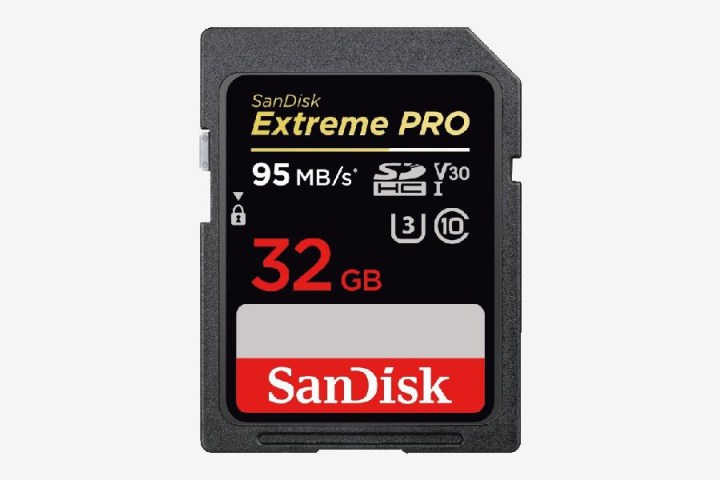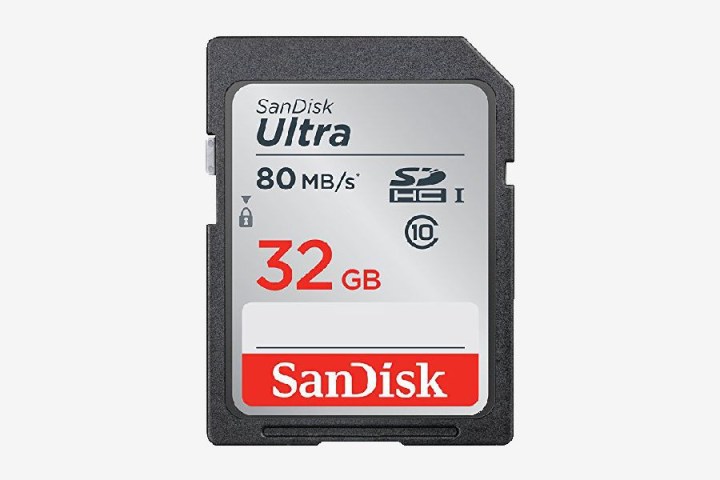While MicroSD cards are becoming more popular in compact cameras and drones, and larger XQD and CFexpress cards are taking on the professional market, the tried-and-true SD card remains a vital component in most DSLR and mirrorless cameras. The best SD cards offer fast performance for high-end photo and video applications while being relatively affordable and compact.
But the sheer number of memory cards on the market can make it hard to know which SD card is right for you and your camera. Here our favorite SD cards, followed by some advice on what to look for when shopping for one.
Best SD cards for your camera
- ProGrade Digital SDXC UHS-II V90 128GB
- SanDisk Extreme Pro 32GB
- Lexar Professional 1000x 32GB
- PNY Elite Performance 32GB
- SanDisk Ultra 32GB
- Sony Tough High Performance
To help get you started on the right path toward picking out the best SD card, we’ve rounded up six of the best you can buy right now. Most of these cards come in varying capacities, but for the sake of simplicity, we’ll stick with posting the 32GB versions. Again, don’t feel like it’s necessary to stick with the brands we’re mentioning, but do proceed with a word of warning that any brands outside of those mentioned above might not have the same level of reliability and support. Prices for these cards are correct at the time of publishing, but they seem to change on a daily basis, so expect slight differences.
ProGrade Digital SDXC UHS-II V90 128GB

ProGrade Digital was founded by members of Lexar’s previous management after Lexar was sold to China-based Longsys. With a focus on the enthusiast and professional photography and video markets, ProGrade Digital has positioned itself as a specialist in the memory card field. Its products range from a 1TB, 1,400MB per second CFExpress card to MicroSD cards for drones and action cameras. It makes two lines of full-size SD card, with either V60 or V90 video speed classes. For high-bitrate video workflows, the V90 cards are the way to go as they promises sustained write speeds over 90MB per second and capacities up to 256GB. A fast transfer speed of 250MB per second also makes the ProGrade Digital SDXC UHS-II V90 ideal for high resolution still photography, as you’ll be able to offload images to your computer quickly. There are some cards out there that are a bit faster, but ProGrade Digital emphasizes reliability over pure speed, fully testing every component of every card it sells to ensure its performance.
SanDisk Extreme Pro 32GB

For the price, the 32GB SanDisk Extreme Pro is a steal. It features read speeds up to 95MB per second and write speeds up to 90MB per second. At these speeds, shooting continuous RAW photos or 4K video shouldn’t be a problem at all. In addition to quick speeds, it’s shock-proof, temperature-proof, waterproof, and X-ray proof. It comes with a limited lifetime warranty to boot, which is always a nice bonus.
Lexar Professional 1000x 32GB

If you need a little more speed than what the SanDisk Extreme Pro offers, Lexar’s 32GB Professional 1000x has your back. This SDHC card has a read speed up to 150MB per second and write speeds up to 75MB per second. It comes in many capacities, ranging from 16GB all the way up to 256GB, so you shouldn’t have any problem finding enough storage for your needs. Like the SanDisk, Lexar offers a limited lifetime warranty for that extra little bit of assurance.
PNY Elite Performance 32GB

PNY might not have the brand recognition of SanDisk or Lexar, but it has proven itself as a worthy competitor. The PNY Elite Performance series features transfer speeds up to 95MB per second. PNY doesn’t say how fast the read and write speeds are individually though. The PNY Elite Performance 32GB also includes a limited lifetime warranty and is shock-proof, temperature-proof, and waterproof, which PNY describes as “capable of operating after complete immersion in one meter of saltwater.” At just over $0.50 per GB, it’s a steal.
SanDisk Ultra 32GB

If speed isn’t necessarily a priority and you would rather spend the money on multiple cards instead of sinking all of your dough into one, look no further than SanDisk’s Ultra 32GB SD card. With write speeds up to 80MB per second, it is more than fast enough for most 1080p video. This SDHC card comes in 16GB, 32GB, 64GB, and 128GB varieties and costs less than $0.21 per GB, which is about as cheap as you’re going to get before you get into less-than-reliable brands.
Sony Tough High Performance

Worried about disaster destroying your images? Sony claims the Tough series SD card offers 18x more protection than the typical SDXC card, surviving water and dust. Constructed from one piece, the Sony Tough High Performance is also less likely to snap if it’s bent. Besides the tough construction, this SD card series is also fast — with 300 MB/s read speeds and write speeds that are almost just as fast, earning a V90 and U3 class designation. If you’re worried about disaster wrecking your photos or working with more disaster-prone gear like drone and waterproof cameras, consider the Sony Tough. The downside? It’s pricier than the typical SD card.
How to choose an SD card
When looking at the hundreds of choices out there for SD cards, there are a few things you should keep in mind. For casual photographers, the most important two are card capacity and price. For some applications, however, the speed of the card is actually more important than the capacity — but judging SD card speed can be rather confusing. Here’s what you need to know about the different capacity and speed classes.
SDHC versus SDXC
When browsing through SD cards, there are two main types you will come across: SDHC and SDXC. SDHC stands for secure digital high capacity, and SDXC stands for secure digital extended capacity. The difference between the two types lies only in the amount of data they store. SDHC cards start at 2GB and top out at 32GB, whereas SDXC cards start at 32GB and theoretically max out at around 2TB of storage, although the largest capacity to date is a 1TB card from SanDisk.
Class and UHS ratings
When talking about the speed of SD cards, there are three terms you will come across: Speed class, UHS (ultra high speed) class, video speed class, and rated speed. While each of these is related in some sense, they are each their own standards, with some taking precedence over another, even when seen on the same SD card.
The speed class of a card is denoted by a “C” with a number inside of it. These classes are based on the following minimum speed of a card (average speed may be higher).
| Class | Minimum Speed |
|---|---|
| 2 | 2 MB/s |
| 4 | 4 MB/s |
| 6 | 6 MB/s |
| 8 | 8 MB/s |
| 10 | 10 MB/s |
In 2009, the SD Association introduced a new class called the UHS speed class. This new class supersedes the standard class mentioned above, but only if your device supports it (most everything made in or after 2009 does). In the event you’re using the SD card in an older device, it will default to the aforementioned speed class rating. Looking at the front of the SD card, this class is designated by a “U” with the speed class number inside.
| UHS Speed Class | Minimum Speed |
|---|---|
| 1 | 10 MB/s |
| 3 | 30 MB/s |
Since then, the SD Association has introduced another class — video speed class, also referred to as “V Class.” SD cards labeled V60 or V90 are designed specifically with high-bitrate video in mind, with an emphasis on 4K, 360, and larger professional filetypes. The various classes and speeds are as follows.
| V Class | Minimum Speed |
|---|---|
| 6 | 6 MB/s |
| 10 | 10 MB/s |
| 30 | 30 MB/s |
| 60 | 60 MB/s |
| 90 | 90 MB/s |
Now, although the above classes are standardized by the SD Association, manufacturers still insist on putting their own rated speed on SD cards. These rated speeds, almost always seen in terms of megabytes per second, are usually the theoretical maximum transfer speeds you can expect from the card. As you would expect, these vary from card to card and manufacturer to manufacturer. And, again, these speeds may very well not be achievable if the device you’re putting the SD card into isn’t capable of these speeds in the first place.
Speed classes refer to the write speed of a the card; that is, how quickly it can record data coming from the camera. Most often, if a card lists its actual megabytes-per-second speed, it is listing the read speed, which is how quickly data can be copied from the card to your computer. Read speeds and write speeds are completely independent of each other, which is why you may see a card advertise something like 150MB/s and yet not have a V90 rating. So pay attention to those class ratings, even if you see an indicated speed that looks to be well above it.
Editors' Recommendations
- Best microSD cards in 2023: top picks for your computer, camera, or drone
- The best camera apps for Android
- The best camera straps for 2021
- The best photography tripods
- The best full-frame cameras




